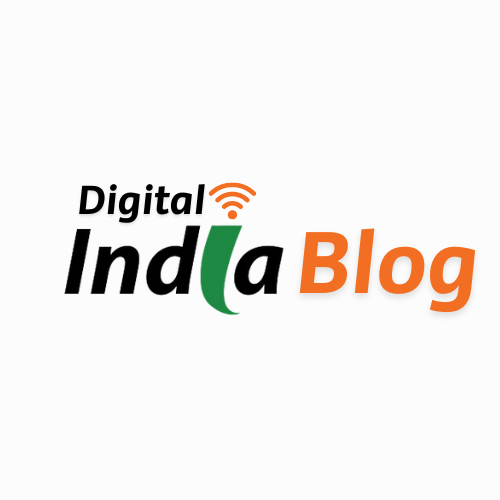
Introduction to Digital India and Digital Marketing
Digital India and Digital Marketing are two distinct yet interconnected concepts that have significantly shaped the contemporary landscape of technology and commerce. Digital India is a government-led initiative aimed at transforming India into a digitally empowered society and knowledge economy. Launched in 2015, the program seeks to enhance digital infrastructure, increase internet connectivity, and promote digital literacy across the nation. The initiative encompasses various projects, such as BharatNet, Smart Cities, and Digital Locker, which collectively strive to bridge the digital divide and provide seamless access to government services.
In contrast, Digital Marketing refers to the strategic use of digital channels and technologies to promote products and services. This includes a wide array of tactics such as search engine optimization (SEO), social media marketing, email marketing, and content marketing. Businesses leverage digital marketing to engage with their target audience, drive online traffic, and ultimately, boost sales and brand awareness. Unlike the broad socio-economic objectives of Digital India, digital marketing focuses primarily on commercial goals and customer engagement.
The purpose of this blog post is to delve into the distinctions and synergies between Digital India and Digital Marketing. While Digital India aims at creating a robust digital framework for the entire nation, digital marketing utilizes this very framework to reach and influence consumers. By understanding both concepts, we can better appreciate their individual contributions and how they interrelate to foster a digitally inclusive and economically vibrant society.
Objectives and Goals of Digital India
The Digital India initiative, launched by the Government of India, aims to transform the country into a digitally empowered society and knowledge economy. At its core, the initiative seeks to enhance digital infrastructure, improve digital literacy, and deliver government services electronically. These objectives are targeted towards bridging the digital divide and fostering inclusive growth across the nation.
One of the cornerstone projects under Digital India is BharatNet, which aims to provide high-speed internet connectivity to all gram panchayats in the country. By connecting rural areas to the internet, BharatNet is designed to empower local communities with access to information, services, and opportunities that were previously out of reach.
Another significant project is Digital Locker, which provides citizens with a secure, digital space to store and share their important documents. This initiative not only reduces the need for physical documents but also facilitates seamless access to government services, streamlining processes and reducing administrative burdens.
The e-Health project under Digital India seeks to revolutionize the healthcare sector by harnessing the power of digital technologies. Through initiatives like telemedicine, electronic health records, and online consultations, e-Health aims to make healthcare more accessible, efficient, and patient-centric, particularly in remote and underserved areas.
Similarly, e-Education aims to transform the educational landscape by leveraging digital tools and platforms. By providing students with access to online courses, digital classrooms, and educational resources, e-Education seeks to enhance the quality of education and ensure that learning opportunities are available to all, regardless of geographic location.
Ultimately, the broader goal of Digital India is to create an inclusive and sustainable digital ecosystem that empowers every citizen. By addressing the challenges of digital infrastructure and literacy, and by delivering essential services electronically, Digital India aims to bridge the digital divide and promote equitable growth across the country.
Objectives and Goals of Digital Marketing
The primary objectives of digital marketing revolve around augmenting brand awareness, driving sales, and fostering customer engagement. These goals are achieved through a multifaceted approach that leverages various strategies, each designed to target specific aspects of the consumer journey.
Increasing brand awareness is often the first step. This involves making potential customers aware of a brand’s existence and values. Techniques such as search engine optimization (SEO) and content marketing are pivotal in this phase. SEO focuses on enhancing a website’s visibility on search engines, thereby attracting organic traffic. Content marketing, on the other hand, involves creating valuable and relevant content to engage and inform the target audience, which helps in establishing the brand as an authority in its field.
Driving sales is another critical objective. Pay-per-click (PPC) advertising and social media marketing are commonly employed to generate leads and convert them into customers. PPC advertising allows businesses to place ads on search engines and other platforms and pay a fee each time the ad is clicked. This ensures that the brand reaches an audience actively searching for related products or services. Social media marketing involves using platforms like Facebook, Instagram, and Twitter to reach a broader audience, promote products, and drive traffic to the website.
Engaging with customers is essential for building long-term relationships and ensuring customer loyalty. Email marketing is a powerful tool in this regard, allowing businesses to send personalized messages, updates, and offers directly to the customer’s inbox. Social media also plays a critical role in engagement, providing a platform for real-time interaction and feedback.
Data analytics stands at the core of measuring and optimizing digital marketing efforts. By analyzing data from various campaigns, businesses can gain insights into customer behavior, preferences, and engagement levels. This data-driven approach enables marketers to refine their strategies, improve targeting, and allocate resources more efficiently, thereby maximizing the return on investment (ROI).
Technological Foundations: Infrastructure vs. Platforms
The technological foundations of Digital India and Digital Marketing, while both robust, cater to different needs and objectives. Digital India prioritizes the development of digital infrastructure, focusing on expanding high-speed internet access, enhancing mobile connectivity, and implementing comprehensive digital ID systems. These efforts aim to create an inclusive digital environment that bridges the digital divide, ensuring that every citizen can participate in the digital economy. High-speed internet and mobile connectivity serve as the backbone of this initiative, enabling seamless access to government services, educational resources, and healthcare information. Digital ID systems, such as Aadhaar, further support this infrastructure by providing a unique identifier for citizens, facilitating secure access to services.
On the other hand, Digital Marketing thrives on digital platforms that leverage the existing infrastructure to reach and engage consumers. Key platforms in this domain include social media, search engines, and e-commerce websites. Social media platforms like Facebook, Instagram, and Twitter enable businesses to connect with their audience through targeted advertising and content marketing. Search engines, particularly Google, play a crucial role in driving traffic to websites through search engine optimization (SEO) and pay-per-click (PPC) advertising. E-commerce websites, such as Amazon and Flipkart, provide a marketplace for businesses to sell their products and services directly to consumers.
While both Digital India and Digital Marketing rely on advanced technology, their purposes diverge significantly. Digital India’s infrastructure aims to empower citizens by providing universal access to digital services and fostering economic growth. Conversely, Digital Marketing platforms focus on leveraging this infrastructure to optimize consumer engagement and drive sales for businesses. Understanding these distinctions and synergies is crucial for leveraging the full potential of digital advancements in both arenas.
Impact on Society and Economy
The advent of Digital India has significantly transformed the societal and economic landscape. By enhancing connectivity and expanding digital services, Digital India aims to bridge the digital divide, thereby improving access to education, healthcare, and governance. For instance, initiatives such as online education platforms and telemedicine services have made quality education and healthcare accessible to remote and underserved areas. This inclusive approach not only elevates the standard of living but also empowers individuals with the tools necessary for personal and professional growth.
On the economic front, Digital India plays a pivotal role in stimulating economic growth. Enhanced digital infrastructure facilitates smoother business operations, encourages entrepreneurship, and attracts foreign investments. Small and medium enterprises (SMEs) particularly benefit from reduced operational costs and improved market access, fostering overall economic resilience and sustainability. Additionally, the digital ecosystem promotes transparency and efficiency in governance, thereby bolstering public trust and enabling better policy implementation.
Conversely, Digital Marketing has revolutionized the way businesses interact with consumers and compete in the market. By leveraging digital platforms, businesses can reach a broader audience with targeted marketing strategies, thereby enhancing customer engagement and satisfaction. This paradigm shift has led to the emergence of data-driven marketing, where consumer behavior analytics play a crucial role in shaping marketing campaigns and improving ROI.
The proliferation of digital marketing has also led to increased market competition, driving businesses to innovate continually to maintain a competitive edge. This innovation extends to the creation of new job opportunities, ranging from content creators and social media managers to data analysts and digital marketing strategists. As a result, the digital marketing industry not only contributes to economic growth but also fosters a dynamic and adaptive workforce.
In essence, while Digital India focuses on building a robust digital infrastructure to uplift society and drive economic growth, Digital Marketing leverages this infrastructure to enhance business operations, consumer interaction, and market competition. Both are integral to the digital transformation, each complementing the other in creating a more connected, efficient, and prosperous society.
Challenges and Barriers
In the realm of Digital India, numerous challenges impede the progress towards a fully digitized nation. One significant barrier is the digital literacy gap. Many individuals, especially in rural areas, lack the basic skills required to effectively utilize digital technologies. This gap inhibits the widespread adoption and utilization of digital services, thereby stalling the momentum of Digital India initiatives.
Cybersecurity threats present another formidable challenge. With the increasing dependence on digital platforms, the risk of cyber-attacks and data breaches has escalated. These threats not only compromise personal and sensitive information but also undermine trust in digital systems. Ensuring robust cybersecurity measures is crucial for the sustainable growth of Digital India.
Infrastructural challenges, particularly in rural areas, further complicate the digital transformation. Inconsistent internet connectivity and limited access to digital devices hinder the seamless integration of digital services in these regions. Addressing these infrastructural issues is vital to bridging the urban-rural digital divide and ensuring inclusive digital growth.
Digital Marketing, on the other hand, faces its own set of challenges. Data privacy concerns are paramount in this domain. With the vast amount of personal data being collected and utilized for targeted advertising, ensuring user privacy and compliance with data protection regulations is essential. Failure to address these concerns can lead to significant reputational damage and legal repercussions.
Ad fraud is another pressing issue in digital marketing. The proliferation of fraudulent activities, such as click fraud and fake impressions, dilutes the effectiveness of marketing campaigns and leads to substantial financial losses. Implementing advanced fraud detection and prevention mechanisms is critical to maintaining the integrity of digital marketing efforts.
Keeping up with rapidly changing digital trends is also a constant challenge. The digital marketing landscape evolves at a swift pace, with new technologies and platforms emerging regularly. Marketers must continuously adapt and innovate to stay relevant and effectively engage their target audiences.
Addressing these challenges is essential for both Digital India and Digital Marketing to achieve their respective goals. By overcoming these barriers, Digital India can pave the way for a more inclusive and secure digital ecosystem, while Digital Marketing can enhance the effectiveness and trustworthiness of its campaigns.
Synergies Between Digital India and Digital Marketing
The convergence of Digital India and digital marketing creates a multitude of opportunities for businesses and consumers alike. As Digital India aims to bolster the country’s digital infrastructure, these improvements naturally enhance the capabilities and reach of digital marketing efforts. For instance, enhanced internet connectivity in rural and urban areas allows marketers to target a more extensive and diverse audience, thereby expanding their customer base and increasing engagement rates.
One of the key synergies is the role of digital literacy. Digital India initiatives focus heavily on educating the population about the digital world, ensuring that consumers are more informed and competent in navigating online platforms. This digital literacy translates into a more engaged and interactive audience for digital marketers. Consumers who understand how to utilize digital tools are more likely to participate in online shopping, social media interactions, and digital financial transactions, thereby amplifying the effectiveness of marketing campaigns.
Case studies highlight the successful integration of these two domains. For example, the e-commerce giant Flipkart capitalized on the Digital India initiative by launching targeted campaigns in regions with newly established internet access. This strategy not only increased their customer base but also promoted digital literacy by encouraging new users to engage with e-commerce platforms. Similarly, the digital payment service Paytm saw a significant increase in user adoption following digital literacy programs that educated consumers on the benefits and security of online transactions.
Moreover, governmental support in the form of policies and incentives under the Digital India umbrella has fostered an environment where digital marketing can thrive. Initiatives like the BharatNet project, which aims to provide high-speed broadband to rural areas, directly benefit digital marketers by widening their reach. Additionally, the emphasis on data security and privacy under Digital India builds consumer trust, which is crucial for the success of any digital marketing strategy.
In essence, Digital India and digital marketing are not just parallel initiatives but synergistic forces that, when combined, create a robust and dynamic digital ecosystem. Businesses that leverage these synergies are better positioned to achieve significant outcomes, from increased market penetration to enhanced consumer engagement.
Future Prospects and Conclusion
The future of Digital India and Digital Marketing holds immense potential, driven by continuous technological advancements, evolving policy frameworks, and strategic innovations. As India progresses towards a more digitally inclusive society, the government’s initiatives such as the Digital India program are expected to further bridge the digital divide. Key technological advancements like 5G, artificial intelligence (AI), and blockchain will play a pivotal role in enhancing connectivity, ensuring data security, and streamlining various digital services. These advancements are likely to foster a more robust digital infrastructure, enabling better access to healthcare, education, and governmental services across urban and rural areas.
On the other hand, the landscape of Digital Marketing is poised for significant transformation. The integration of AI and machine learning in marketing strategies will offer more personalized and targeted advertising, enhancing customer engagement and conversion rates. Additionally, the growing importance of data analytics will empower businesses to make informed decisions, optimize their marketing efforts, and achieve better ROI. As privacy concerns continue to rise, the implementation of stricter data protection regulations will necessitate more transparent and ethical marketing practices, fostering trust and loyalty among consumers.
Policy advancements will also be crucial in shaping the future trajectories of both Digital India and Digital Marketing. Government policies aimed at promoting digital literacy, cybersecurity, and innovation will provide a conducive environment for technological growth. Collaborative efforts between the public and private sectors will be essential in driving these initiatives forward, ensuring that the benefits of digital transformation are accessible to all segments of society.
In conclusion, understanding the distinctions and synergies between Digital India and Digital Marketing is pivotal for leveraging their full potential. As technology continues to evolve, the convergence of these two domains will unlock new opportunities for economic growth, social development, and business success. By staying abreast of emerging trends and adapting to the dynamic digital landscape, stakeholders can harness the power of digitalization to achieve a more prosperous and inclusive future.









